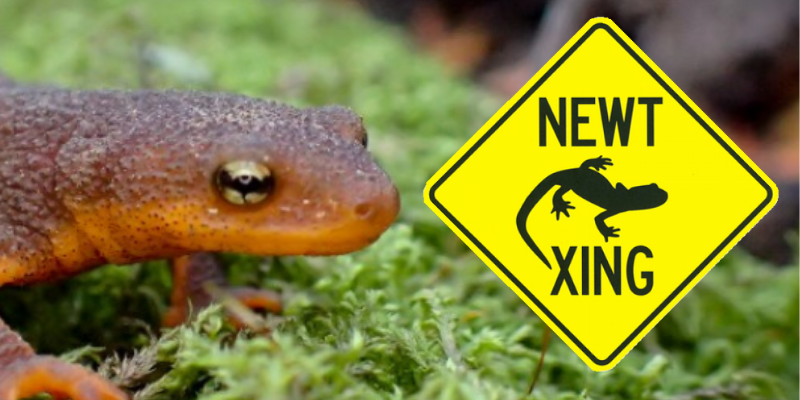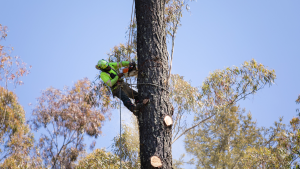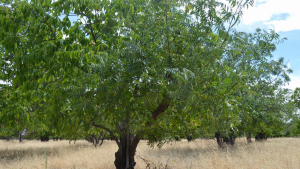Annual South Park Drive Closure for Newt Migration
November 1, 2023, through March 31, 2024

South Park Drive in Tilden Regional Park will be closed to all motor vehicle traffic from November 1, 2023, through March 31, 2024, to protect migrating and breeding newts. Visitors are welcome to use the road during the closure for walking, cycling, and dog-walking. Please keep dogs away from the newts as they are poisonous to pets. Cyclists are asked to proceed slowly and avoid newts crossing the road. As a reminder, collecting of wildlife is not allowed in the parks.
The detour ensures a safe habitat for the tiny, slow-moving newts who have made Tilden Park their home. Watch for them on the ground when traveling on foot or bike on South Park Drive. Drive slowly when passing the Regional Parks Botanic Garden on Wildcat Canyon Road, as many newts cross in this unprotected area.
The Park District is committed to making parklands accessible to visitors, while also protecting sensitive species in our urban landscape. Although not an officially threatened species, the overall newt population has decreased over the past several decades primarily due to loss of habitat. Since the mid-1980s, Tilden Park operations staff have worked closely with the District’s stewardship department to ensure the safe passage for migrating newts.
Fun Facts about Newts
There are two native species of newts in our area, the California newt, Taricha torosa, and the rough-skinned newt, Taricha granulosa. The California newt is more common in the Regional Parks, especially to the east.
The California newt is a native species five-to-six inches long. After spending the dry season in sheltered upland locations, the newts migrate in the winter for breeding. They respond to the moisture level in the air, coming out after the rains, and even after heavy fog.
Studies have shown some newts are able to return to their home stream from distances up to 2.5 miles, although shorter migrations are more common.
During the breeding season, male newts change more dramatically than females. Once in the water, males swell and become bulkier, their tails become flattened for swimming, and they develop nuptial pads on their feet for gripping females. Females may develop a slightly flattened tail.
When newly hatched, larval newts look similar to a frog tadpole but have tiny legs and external gills. Larval newts have tiny front legs from hatching that become more prominent as they grow. Both local species of newts have external gills as larvae, but only the California newt’s larvae are striped. As summer progresses, they metamorphose into a terrestrial juvenile (a tiny version of the adult) - changing color, losing their gills, and leaving the water to find an upland retreat.
Some newts weather the dry months in rodent burrows, under rocks and logs, and anywhere moisture is trapped. Others may remain in their mating pools year-round if the pools stay filled with water.
Visit the Park District’s Amphibians webpage to learn more about newts, including where to find them, regeneration, conservation, and their super powers!




